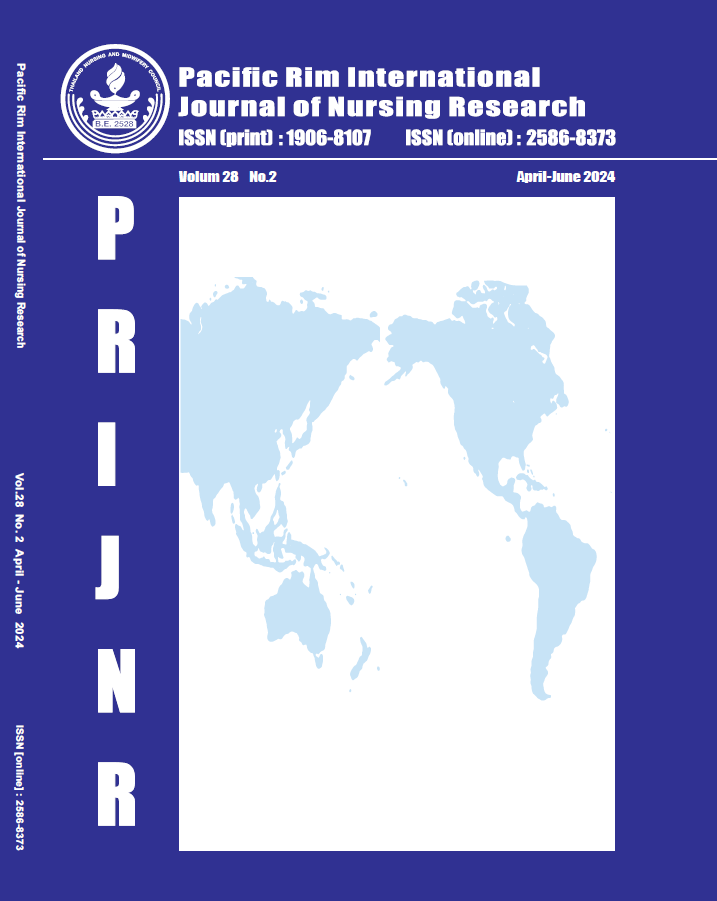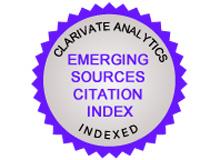Effectiveness of Spontaneous Pushing versus Valsalva Pushing in the Second Stage of Labor on Maternal and Neonatal Outcomes: A Systematic Review and Meta-analysis
DOI:
https://doi.org/10.60099/prijnr.2024.264145Keywords:
Maternal pushing, Meta-analysis, Neonatal outcomes, Maternal outcomes, Second stage of labor, Systematic review, Valsalva pushingAbstract
Vaginal birth is a natural process, but maternal pushing is an essential factor in the mechanism and process of delivery. This systematic review examined the evidence comparing the effectiveness of two methods of pushing techniques (spontaneous pushing versus Valsalva pushing) on maternal and neonatal outcomes in the second stage of labor. A literature search of Scopus, PubMed, ScienceDirect, CINAHL, PsycINFO, and ThaiJo for articles published between 2012 and 2023 revealed 12 studies with a focus on maternal pushing during the second stage, but four with neonatal outcomes (APGAR scores) and maternal outcomes (fatigue and duration of labor). Meta-analysis of the four studies did not support the benefit of spontaneous pushing in reducing the duration of labor but did support spontaneous pushing in lessening maternal fatigue two hours postpartum. Spontaneous pushing did not directly benefit the neonatal APGAR scores at 1 or 5 minutes postpartum. The result that spontaneous pushing did not shorten labor was unexpected; this is contrary to other studies that have reported a shorter labor duration. The small number of studies makes it difficult to conclude the effectiveness of either pushing technique. Further evidence is necessary to include possible confounding variables postpartum, including women’s choice, advanced assessments of neonatal outcomes, and maternal recovery beyond the immediate postpartum period.
References
Cunningham FG, Leveno KJ, Bloom SL, Dashe JS, Hoffman BL, Casey BM, et al. Williams obstetrics. 25th ed. New York: McGraw-Hill Professional. 2018.
Martin C. Effects of valsalva manoeuvre on maternal and fetal well-being. Br J Midwifery. 2009;17(5):279–85. https://doi.org/10.12968/bjom.2009.17.5.42214. DOI: https://doi.org/10.12968/bjom.2009.17.5.42214
Yildirim G, Beji NK. Effects of pushing techniques in birth on mother and fetus: a randomized study. Birth (Berkeley, Calif). 2008;35(1):25–30. https://doi.org/10.1111/j.1523-536X.2007.00208.x DOI: https://doi.org/10.1111/j.1523-536X.2007.00208.x
Simpson KR, Creehan PA, O’Brien-Abel N, Roth CK, Rohan AJ. AWHONN’s perinatal nursing. 5th edition: Wolters Kluwer; 2020.
Prins M, Boxem J, Lucus C, Hutton E. Effect of spontaneous pushing versus Valsalva pushing in the second stage of labour on mother and fetus: a systematic review of randomised trials. BJOG. 2011;118(6):662–70. https://doi.org/10.1111/j.1471-0528.2011.02910.x DOI: https://doi.org/10.1111/j.1471-0528.2011.02910.x
Di Mascio D, Saccone G, Bellussi F, Al-Kouatly HB, Brunelli R, Benedetti Panici P, et al. Delayed versus immediate pushing in the second stage of labor in women with neuraxial analgesia: a systematic review and meta-analysis of randomized controlled trials. Am J Obstet Gynecol. 2020;223(2):189–203. https://doi.org/10.1016/j.ajog.2020.02.002 DOI: https://doi.org/10.1016/j.ajog.2020.02.002
Assopardi C, Spiteri G. Midwives’ views on spontaneous versus Valsalva pushing during the second stage of labor. MIDIRS Midwifery Digest. 2022;32(3);351–56.
Yao J, Roth H, Anderson D, Lu H, Li X, Baird K. Benefits and risks of spontaneous pushing versus directed pushing during the second stage of labour among women without epidural analgesia: a systematic review and meta-analysis. Int J Nurs Stud. 134:104324. https://doi.org/10.1016/j.ijnurstu.2022. 104324 DOI: https://doi.org/10.1016/j.ijnurstu.2022.104324
Somsripang P, Sornchai S. Comparison of childbirth preparation and pushing technique toward birth outcomes among nulliparous women. Nurs J Ministry Publ Health. 2014;24(1):45-5 (in Thai). https://he02.tci-thaijo.org/index.php/tnaph/article/view/18326/16122
Lemos A, Amorim M, Dornelas de Andrade A, de Souza A, Cabral FJ, Correia J. Pushing/bearing down methods for the second stage of labour. Cochrane Database Syst Rev. 2017;3:CD009124. https://doi.org/10.1002/14651858.CD009124 DOI: https://doi.org/10.1002/14651858.CD009124.pub3
British Royal College of Obstetricians and Gynaecologists. Intrapartum care of healthy women and their babies during childbirth. 2007 [updated 31 May 2010]. Available from: https://www.nice.org.uk/nicemedia/live/11837/36275/36275.pdf
Joanna Briggs Institute. JBI Reviewers’ Manual: 2014 edition/ supplement. South Australia: The Joanna Briggs Institute 2014. Available from: https://www.joannabriggs.org
Ahn E, Kang HI. Introduction to systematic review and meta-analysis. Korean J Anesthesiol. 2018;71(2):103–12. https://doi.org/10.4097/kjae.2018.71.2.103 DOI: https://doi.org/10.4097/kjae.2018.71.2.103
Adrade C. Understanding the basics of meta-analysis and how to read a forest plot: as simple as it gets. J Clin Psychiatry. 2020;81(5):20f13698. https://doi.org/10.4088/JCP.20f13698 DOI: https://doi.org/10.4088/JCP.20f13698
Page MJ, McKenzie JE, Bossuyt PM, Boutron I, Hoffmann TC, Mulrow CD, et al. The PRISMA 2020 statement: an updated guideline for reporting systematic reviews. BMJ. 2021;372:n71. https://doi.org/10.1136/bmj.n71 DOI: https://doi.org/10.1136/bmj.n71
Saokhaw S. Understanding and interpretation of meta-analysis study. Chiangrai Med J. 2016;8(1):1-17. Retrieved from https://www.crhospital.org/cmj/article/FULL_2017 0802113812.pdf
Piper C. System for the Unified Management, Assessment, and Review of Information (SUMARI). J Med Libr Assoc. 2019;107(4);634-6. https://doi.org/10.5195/jmla.2019.790 DOI: https://doi.org/10.5195/jmla.2019.790
Sukying W, Phumdoung S, Thitimapong B. The effects of natural pushing together with a preliminary controlled breathing of yoga on duration of the second stage of labor and postpartum fatigue in primiparous women. PNUJR. 2018;10(1):1–12. https://li01.tci-thaijo.org/index. php/pnujr/article/view/109332/86024
Tufanaru C, Munn Z, Stephenson M, Aromataris E. Fixed or random effects meta-analysis? Common methodological issues in systematic reviews of effectiveness. Int J Evid Based Healthc. 2015;13(3):196–207. https://doi.org/10.1097/XEB.0000000000000065 DOI: https://doi.org/10.1097/XEB.0000000000000065
Israel H, Richter RR. A guide to understanding meta-analysis. J Orthop Sports Phys Ther. 2011;41(7):496–504. https://doi.org/10.2519/jospt.2011.3333 DOI: https://doi.org/10.2519/jospt.2011.3333
Taedaengpet A, Rujiraprasert N, Chaisiwamongkol W. The effects of pushing techniques on birth outcome and postpartum fatigue among nulliparous women. J Nurs Assoc Thailand, North-Eastern Div. 2012;30(1):22–31. https://he01.tci-thaijo.org/index.php/jnat-ned/article/view/1392/1116
Koyucu RG, Demirci N. Effects of pushing techniques during the second stage of labor: a randomized controlled trial. Taiwan J Obstet Gynecol. 2017;56(5):606-12. https://doi.org/10.1016/j.tjog.2017.02.005 DOI: https://doi.org/10.1016/j.tjog.2017.02.005
Elzihiri MAA, Fathy TM, El-Nemer AMR, Mohemed MAEM, Fahemy NM. Effect of applying spontaneous pushing technique during second stage of labor on women’s early postpartum fatigue. Mansoura Nurs J. 2016;3(1):165–82. DOI: https://doi.org/10.21608/mnj.2016.149324
https://mnj.journals.ekb.eg/article_149 324_c107f8a 6fc09c15d049ec10427c7e31d.pdf
Thomson AM. Maternal behaviour during spontaneous and directed pushing in the second stage of labour. J Adv Nurs. 1995;22(6):1027–34. https://doi.org/10.1111/j.1365-2648.1995.tb03101.x DOI: https://doi.org/10.1111/j.1365-2648.1995.tb03101.x
Beynon C. The normal second stage of labour: a plea for reform in its conduct. J Obstet Gynaecol Br Emp. 1957;64(6): 815-20. https://doi.org/10.1111/j.1471–0528.1957. tb08483.x DOI: https://doi.org/10.1111/j.1471-0528.1957.tb08483.x
Di Mascio D, Saccone G, Berghella V. Reply to Delayed versus immediate pushing in the second stage of labor in women with neuraxial analgesia: a systematic review and meta-analysis of randomized controlled trials. Am J Obstet Gynecol. 2021;224(1):128–29. https://doi.org/10.1016/j.ajog.2020.09.018 DOI: https://doi.org/10.1016/j.ajog.2020.09.018
Yurachai M, Ratinthorn A, Serisathien YS, Sinsuksai N. The effects of directed versus spontaneous pushing on postpartum fatigue, perineal pain and childbirth satisfaction. Nurs Sci J Thail. 2009;27(3):27–36. Abstract available from: https://ns.mahidol.ac.th/english/journal_NS/pdf/vol27/supplement2/abstract_maneewan.pdf
Gillesby E, Burns S, Dempsey A, Kirby S, Mogensen K, Naylor K, et al. Comparison of delayed versus immediate pushing during second stage of labor for nulliparous women with epidural anesthesia. J Obstet Gynecol Neonatal Nurs. 2010;39(6)635-44. https://doi.org/10.1111/j.1552- 6909.2010.01195.x DOI: https://doi.org/10.1111/j.1552-6909.2010.01195.x
Lai ML, Lin KC, Li HY, Shey KS, Gau ML. Effects of delayed pushing during the second stage of labor on postpartum fatigue and birth outcomes in nulliparous women. J Nurs Res. 2009;17(1):62–72. https://doi.org/10.1097/JNR.0b013e3181999e78 DOI: https://doi.org/10.1097/JNR.0b013e3181999e78
Yeates DA, Roberts JE. A comparison of two bearing-down techniques during the second stage of labor. J Nurse Midwifery. 1984;29(1):3–11. https://doi.org/10.1016/0091-2182(84)90324-0 DOI: https://doi.org/10.1016/0091-2182(84)90324-0
Parnell C, Langhoff-Roos J, Iversen R, Damgaard P. Pushing method in the expulsive phase of labor. A randomized trial. Acta Obstet Gynecol Scand. 1993;72(1):31–5. https://doi.org/10.3109/00016349309013345 DOI: https://doi.org/10.3109/00016349309013345
Cahill AG, Srinivas SK, Tita ATN, Caughey AB, Richter HE, W. Gregory WT, et al. Effect of immediate vs delayed pushing on rates of spontaneous vaginal delivery among nulliparous women receiving neuraxial analgesia: a randomized clinical trial. JAMA. 2018;320(14):1444–54. https://doi.org/10.1001/jama.2018.13986 DOI: https://doi.org/10.1001/jama.2018.13986
Downloads
Published
How to Cite
Issue
Section
Categories
License
Copyright (c) 2024 Pacific Rim International Journal of Nursing Research

This work is licensed under a Creative Commons Attribution-NonCommercial-NoDerivatives 4.0 International License.
Copyright: The Pacific Rim International Journal of Nursing Research, Thailand Nursing & Midwifery Council has exclusive rights to publish, reproduce and distribute the manuscript and all contents therein.








.png)



